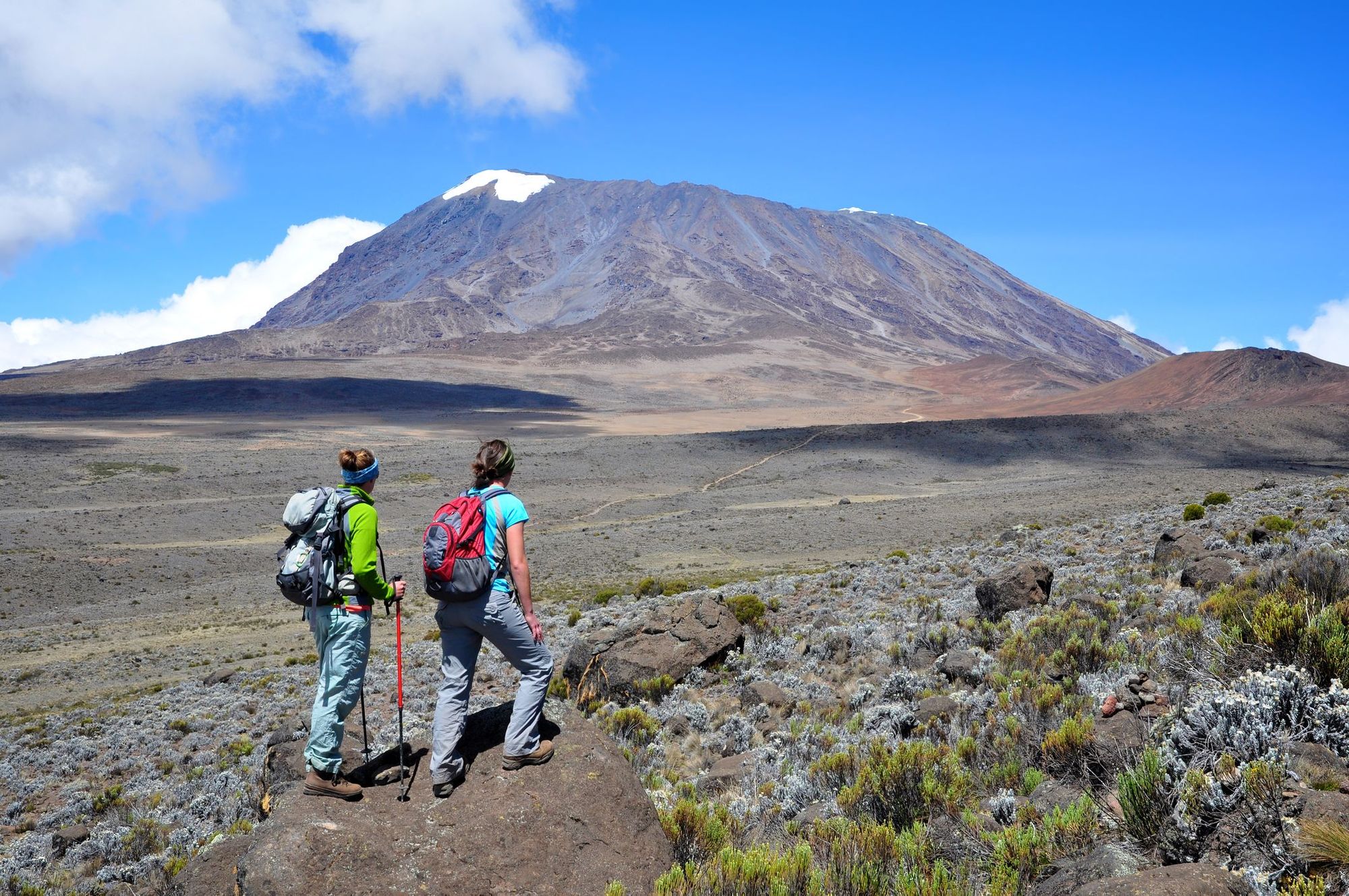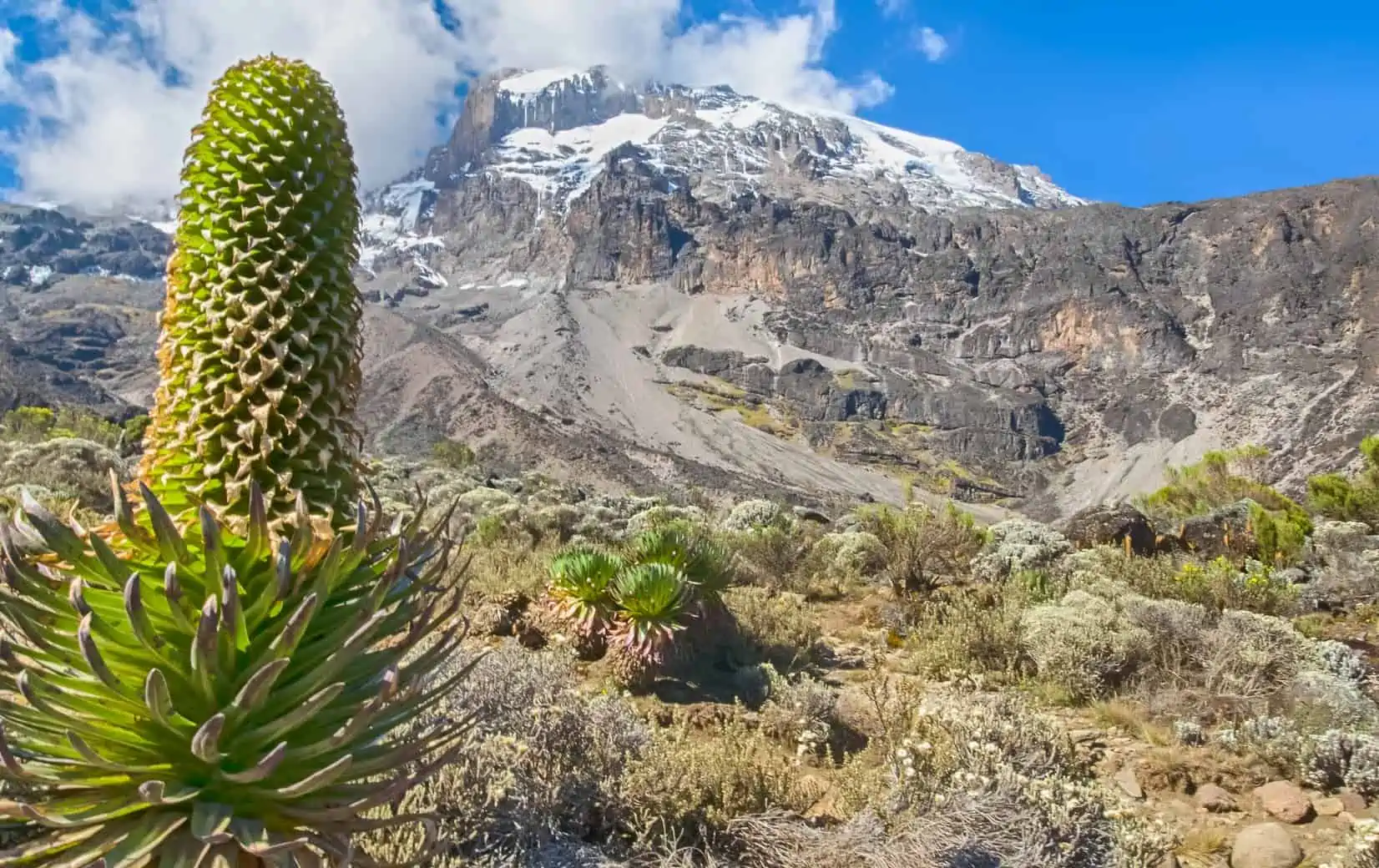
How to train for Kilimanjaro.
Climbing Mount Kilimanjaro is a physical undertaking, so you should prepare yourself accordingly with a Kilimanjaro training program. If you want to have an enjoyable Kilimanjaro trek, then training is essential! Very few people can spontaneously turn up in Tanzania and climb Kilimanjaro without difficulty.
Being in good shape is important in many respects. Obviously, strong, conditioned legs make it easier to walk uphill and downhill for sustained periods of time. General aerobic fitness allows the body to function efficiently with less oxygen. And a fit body is more likely to withstand the stress of consecutive days of hiking and camping. Finally, a positive mental attitude can work wonders for you when fatigue and doubts arise.
Although there are general guidelines, in reality, there is no “one size fits all” for a Kilimanjaro training plan. People who decide to climb Kilimanjaro come from all sorts of backgrounds, experience and levels of fitness. You might be living in a city or in the countryside surrounded by mountains. You could be sat in an office or working outdoors – Aside from your physical fitness, where you live and what facilities you have available to you will also determine the training program that will work for you.
TRAINING PLAN FOR YOUR UPCOMING KILIMANJARO CHALLENGE
To help you prepare for the physical and mental challenges of Kilimanjaro, we believe there are 6 key elements that your training plan should be based on for a successful and enjoyable trek.
- Cardiovascular training
- Strength Training
- Physical Stamina Training
- Breath Control
- Practice Hikes
- Mental Strength
A. Cardiovascular Training
Improving your cardiovascular fitness is step one in training for climbing Kilimanjaro, any exercise that increases your heart rate and increases the strength of your cardiovascular system (heart, circulation, lungs). Run, cycle, swim, or do whatever activity you enjoy that gets the heart rate up.
Cardiovascular training improves the efficiency of oxygen transport in the body. Due to the high altitude and reduced oxygen levels during the ascent of Kilimanjaro, your body is going to fatigue much sooner. By improving your body’s oxygen, you will be able to trek longer and harder
B. Strength Training
Any training plan for Kilimanjaro should include strength training this means any exercise that increases muscular strength, particularly exercise using resistance for example squats, bench presses, push ups, lateral raises, bicep curls, tricep dips, and more. After all, you will be on your feet carrying a daypack for at least 7-8 hours a day. So, in order to trek to 5895m (and back down), you’re going to need a lot of strength in your legs, core, back, shoulders, and upper body, you will need a lot of muscle strength to power you up Kilimanjaro. Your quads, glutes, hamstrings, calves, and ankle stabilizing muscles need to be strong for the trekking. In addition, you’ll need core strength to stabilize you, back and shoulder strength to carry your pack for hours, and general upper body strength for using your trekking poles.
C. Stamina Training / Endurance Training
Any exercise that increases your ability to endure exercise for longer, harder, or faster. Your body will be better prepared to not only trek 4-8 hours per day, but 7 -8 days in a row. Endurance is two-fold: General endurance and specific endurance. For example, you can train to cycle for 200 miles, but this won’t necessarily transfer to your ability to endure 200 miles of trekking. That’s why endurance training should focus on functional exercises that are similar to your end goal. Examples of specific endurance training to include are practice hikes and stair climbing (ascending and descending).
D. Breath Control
Your Kilimanjaro training plan should include breath control. Controlled breath is the foundation for success. Improving your breath control will enable you to breathe in a high altitude/low oxygen environment. By increasing your oxygen intake, you’ll be able to trek harder for longer. Breathing deeply into the abdomen distributes plenty of oxygen to the body and also helps to calm the heart rate. Unfortunately, breath control is often overlooked in Kilimanjaro training- but it shouldn’t. Yoga and swimming are the two best methods of improving breath control as both emphasize matching movement with inhales/exhales, Also activities like singing, playing a wind instrument, or just learning diaphragmatic breathing will help.
“Pole-Pole” – Swahili for “Slowly-slowly” This is a phrase that will be with you for the rest of your life! And maybe a lesson you can take away to use in the rest of your life.
In Swahili, it means slowly; take it easy, relax, calm down – basically chill out and walk at a snails pace. When climbing Kilimanjaro, being slow, and steady can mean the difference between reaching the summit or not. It is not a race to the top and your body and guides will let you know. Take your time, enjoy where you are and let your body get acclimatised to the surroundings.
E. Practice Hikes
One of the best ways to prepare for your Kilimanjaro trek is to get outdoors and do training hikes. It is true, Kilimanjaro is not a technical mountain, but that does not mean it is not a physically demanding, strenuous climb. The altitude alone increases the difficulty of the journey. The best exercise to prepare for Mount Kilimanjaro is hiking because that is what you will be doing on the mountain.
Practice with your gear
Adding a backpack with some weight in it, wearing hiking boots and trekking socks on your outdoor excursions will help you train as well. If you don’t have a lot of experience hiking, start with some shorter jaunts and build up to longer ones. On Kilimanjaro, you will be hiking 4-6 hours a day and on summit day, 12-14 hours, so you want to condition yourself to handle this level of activity. Endurance is key, so train for duration rather than intensity.
F. Mental Strength
Kilimanjaro will push you to your very edge – from freezing nights, lack of showers and sleep, unending hills, potential sickness, blisters, and more
although all your physical endurance training will help you build your physical stamina, the most powerful thing is something personal that comes from within. Surely, you will need strong will and determination to overcome the summit challenge, psychologically and spiritually, you should define your motivation for doing the trek and develop a personal mantra that you can repeat to yourself
When climbing Kilimanjaro especially on summit night, you may not be the most physically fit – but if you have determination, confidence and mental stamina you can do it and stand on the roof of Africa!
Let us plan your dream Tanzania Safari
Enquire now and a Travel expert will get back to you within 24 hours.
 CHAT ON WHATSAPP
CHAT ON WHATSAPP





